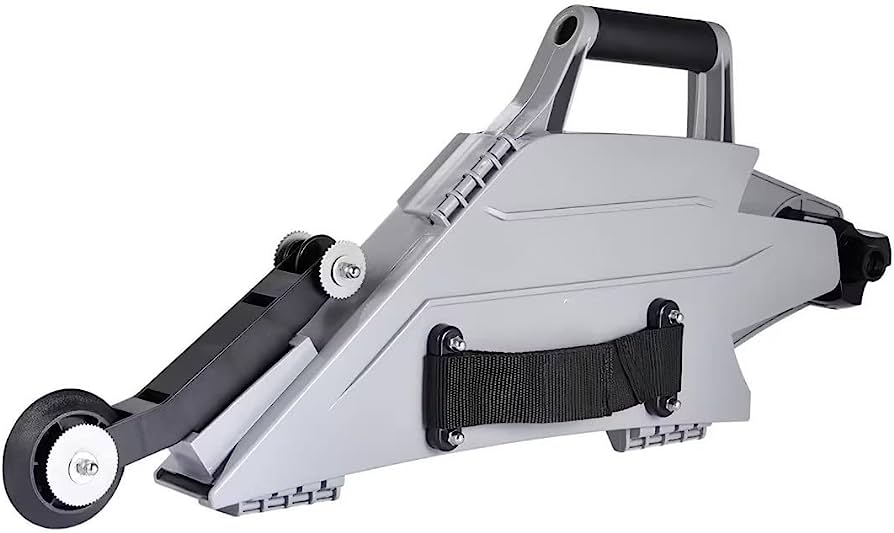Drywall installation requires careful taping and joint compound application for a smooth and professional finish. One popular tool for this task is the drywall banjo, a mud or tape dispenser that simplifies the process. However, if a banjo isn’t available or alternative methods are preferred, there are various techniques like using a mud pan and taping knife, a mud box, an automatic taper, or corner rollers that can achieve comparable results. Whether you opt for a banjo or one of these alternatives, the goal remains the same: achieving seamless and expertly finished drywall surfaces.

What is a Drywall Banjo?
A drywall banjo is a handy tool used in the construction and installation of drywall or gypsum board. Also known as a mud or tape dispenser, the banjo is designed to efficiently apply joint compound or mud to the seams between drywall panels. It is a valuable asset for both professional drywall installers and DIY enthusiasts.
The banjo consists of a metal or plastic body shaped like a banjo, hence the name, with a tape reel and a mechanism for dispensing mud. The tape reel is located at the top of the banjo and holds a roll of drywall joint tape. The tape feeds through the banjo, and as the user applies pressure on the tool, the joint compound is squeezed out and coats the tape. This allows for quick and seamless application of the compound to the joints.
Using a drywall banjo offers several advantages. Firstly, it speeds up the taping process, allowing for efficient and precise application of joint compound. The tape reel eliminates the need for manually handling and cutting individual strips of tape, saving time and effort. The banjo’s design also ensures a consistent amount of mud is applied, resulting in even coverage and reducing the risk of uneven seams.
Moreover, the drywall banjo enables better control over the amount of compound being dispensed. By adjusting the tension or pressure on the tool, users can customize the flow of mud, catering to the specific needs of each joint or seam. This versatility helps achieve professional-looking results, minimizing the need for excessive sanding or touch-ups.
Whether you are a professional or a do-it-yourselfer, investing in a drywall banjo can greatly enhance your drywall installation process. It simplifies taping, improves efficiency, and contributes to a cleaner and more precise finish. However, like any tool, proper handling, cleaning, and maintenance are essential to ensure optimal performance and longevity.
In conclusion, a drywall banjo is a specialized tool designed for applying joint compound to drywall seams. Its efficient tape dispensing system and adjustable mud flow make it an indispensable tool for achieving seamless and professional results in drywall installation projects.
Drywall Banjo Alternatives
While a drywall banjo is a popular tool for applying joint compound and tape to drywall seams, there are alternative methods available that can achieve similar results. These alternatives may be useful if you don’t have access to a banjo or prefer different techniques. Here are a few common alternatives:
- Mud Pan and Taping Knife: The traditional method of taping involves using a mud pan and a taping knife. Joint compound is scooped onto the mud pan, and then the taping knife is used to scoop the compound onto the seam and apply pressure to embed the tape. This method requires manual cutting of tape and may take more time and practice to achieve consistent results compared to a banjo.
- Mud Box: A mud box is a tool that can be used as an alternative to a banjo. It consists of a container with a hinged lid and a slot for feeding tape. Joint compound is poured into the box, and as the tape is pulled through the slot, it is coated with the compound. This method allows for continuous taping without the need to manually refill the box frequently.
- Automatic Taper: An automatic taper, also known as a bazooka, is a professional-grade tool that combines a tape reel and compound dispenser. It is typically used in large-scale drywall projects. The automatic taper feeds the tape and applies the compound simultaneously, providing efficient and consistent taping. However, it requires experience and skill to operate effectively.
- Corner Rollers: For taping inside corners, corner rollers can be used. These tools have wheels that roll along the corner, applying joint compound and embedding the tape in one motion. Corner rollers are particularly useful for achieving smooth and seamless inside corners.
When considering these alternatives, it’s important to note that each method may have a learning curve, and results may vary based on individual skill and experience. It’s always a good idea to practice and experiment before undertaking a large drywall project.
Ultimately, the choice of tool or technique depends on personal preference, the scale of the project, and the desired level of efficiency and quality. Exploring and familiarizing yourself with different methods can help you find the most suitable alternative to a drywall banjo for your specific needs.
What else is drywall known as?
Here’s a list of different names for drywall (gypsum board, plasterboard, wallboard) used in various countries:
- United States: Drywall or Sheetrock
- Canada: Drywall or Gyproc
- United Kingdom: Plasterboard
- Australia: Plasterboard or Gyprock
- New Zealand: Gib board
- South Africa: Gypsum board or Plasterboard
- India: Gypsum board or POP (Plaster of Paris) board
- Germany: Rigips or Gipskartonplatte
- France: Placoplâtre or BA13 (named after a common thickness of 13 mm)
- Japan: Gyosumubōdo or Jibukon
- Brazil: Drywall or Placa de gesso acartonado
How to Wear Your Banjo Picks
Learn Basic Banjo Chords
Learn to Banjo Roll
Bluegrass Banjo Right Hand Technique
How To Tune Your Banjo
How to play Foggy Mountain Breakdown on Banjo
